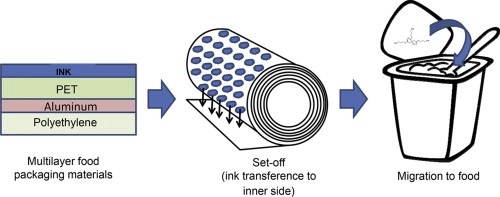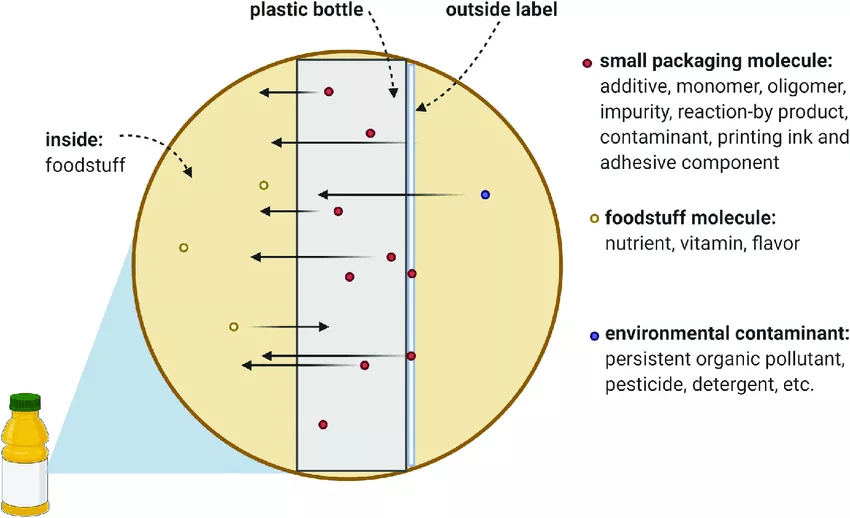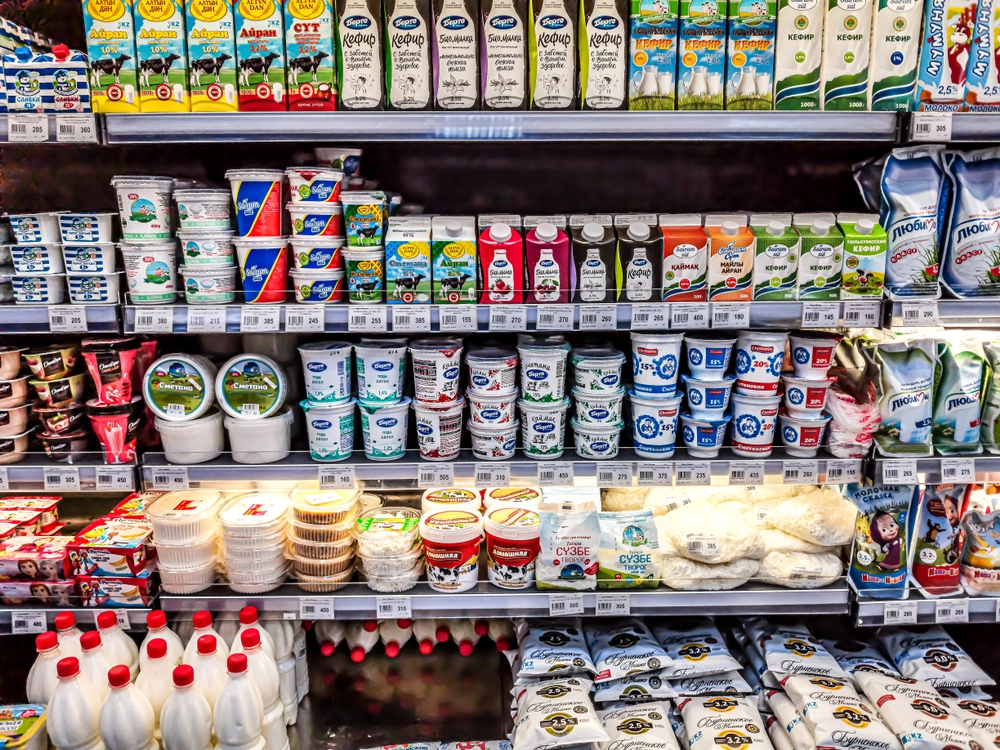How to Reduce Food Packaging Migration with Food-Safe Inks
Part of the food packaging industry’s responsibility is food safety. This ensures keeping food products clean and free from any hazardous substances that may come from the packaging’s material and ink.
Hence, the goal is to minimize the risk of packaging ink and coatings from migrating to the packaged food and contaminating it. An effective method of protecting products and consumers is using food-safe and low-migration inks for food packaging.
Learn more about ink migration and the different food packaging supplies that can help you avoid ink migration.
What is Food Packaging Ink Migration?
Ink migration occurs when the ink on a packaging’s design bleeds through the packaging material and makes contact with the food product. Ink migration jeopardizes the product in several ways:
- According to research, ink migration threatens consumer health since many common food packaging inks may contain hazardous chemicals.
- Ink migration can create additional legal risks for brands that manufacture, package, and sell food, beverages, and other sensitive products. The category of sensitive products include diapers, tissues, and other products that can come into contact with the consumer’s skin.
- Food products are particularly sensitive since they are ingested, so the Code of Federal Regulations Title 21 states that substances that come into contact with your food products must be “of a purity suitable for its intended use.”
- Consumers who receive ink-stained products may perceive your brand as inferior or unsafe to use.
Several contributors to ink migration include the product’s storage environment, shipping method, and primary packaging material. Learning more about how ink migration occurs can help brands find ways to ensure consumer safety.

Image Source: ScienceDirect
Primary and Secondary Packaging and Food Safety
In food packaging, food safety and ink migration are of greater concern for primary packaging than for secondary packaging. Primary packaging touches the food directly and has no protective barrier between the packaging and the food. An aluminum can or plastic bottle are examples of primary packaging. Additional examples include bags of potato chips, candy bar wrappers, and boxes of fresh produce.
Secondary packaging is used to transport and display food products and is used outside of primary packaging. It protects the food product during shipping and also provides branded messaging on the retail display shelf.
If ink were to migrate through the secondary packaging layer, it still has the protection of the primary packaging layer.
Types of Food Ink Migration
Since ink migration happens for various reasons, here are the common types to be aware of:
1. Set-off migration
Set-off ink migration occurs when the surface of a printed layer of the food packaging touches a non-printed layer from being stacked or wound in the same, freshly printed reel. An example of set-off ink migration is immediately stacking freshly printed cups; the outside print can rub off on the inside of another cup.
2. Gas-phase migration
Also referred to as vapor migration, gas-phase ink migration occurs when chemicals from the food packaging material evaporate and land on the food product, either from heating, baking, or boiling. For instance, this migration is most likely to occur when heating a packaged meal in a microwave oven.
3. Diffusion migration
Diffusion, also known as penetration ink migration, happens when a material fails to block the packaging ink, allowing it to be seen on the reverse side. It occurs when the ink particles are so tiny that they slowly pass through the packaging’s material. It may also mean the packaging material is too thin for the ink.

To illustrate diffusion ink migration, suppose you stick a label on a plastic bottle. If the plastic substrate were thin enough, a small amount of ink from the packaging could migrate inside the bottle, contaminating the beverage.
4. Condensation migration
This type of migration is similar to gas-phase migration in that it occurs in high-temperature environments. Condensation migration typically happens when a product is sterilized or cooked while still in its packaging.
Pasteurization is an instance where condensation ink migration is likely to occur. Professionals treat packaged milk products with high heat to eliminate harmful pathogens in the mixtures, prolonging their shelf life.
Although ink migration isn’t completely avoidable, there are methods for minimizing and reducing it.
5 Ways to Reduce Food Packaging Ink Migration with Food-Safe Inks
Paper, plastics, and synthetic films are commonly used materials in food packaging; These substrates are susceptible to ink migration. Using food-safe aqueous (or water-based) inks can be highly preferable in minimizing the risks of migration.
1. Choose a suitable food-grade ink
Food-safe inks are safe to use in printing food packaging. Since ink migration can be unavoidable, these inks can have chemical components, including glycerin and water, that make them safe for consumption.
Apart from their chemical makeup, food-safe inks still have the qualities that produce excellent print quality: short drying time, adequate surface tension for printing, and smear resistance. The food-grade ink suitable for packaging depends on several factors, including the substrate type, your budget, and color.
2. Use eco-friendly water-based inks
Eco-friendly water-based (or aqueous) inks are among the safest in the food packaging industry. They’re highly versatile and durable without sacrificing image quality. They’re ideal for food safety and if your brand desires to use more eco-friendly food packaging to improve sustainability.
3. Conduct risk assessments and migration testing
Despite food-safe inks being safe for consumption, testing is still a highly recommended step in the printing process to ensure the health and safety of your customers.
Tests include migration modeling, organoleptic testing, and worst-case scenario analysis. It’s advisable to undergo risk assessments even if your business uses commonly used packaging materials, such as kraft paper and bioplastics.

4. Prepare packaging logistics
Keeping a close eye on the logistics of your packaged products will help manage the occurrence of ink migration.
Ensure that the products aren’t too tightly arranged to keep a safer gap between the wrapping and the food products. Products can be stored in a temperature-controlled environment, reducing the chances of condensation or gas-phase migration.
5. Ensure a complete drying and curing process
Letting packaging dry and cure completely before stacking or rolling them together can help minimize ink migration. Professional packaging experts will typically use a combination of IR emitters and UV lamps to ensure that each packaging design is dry before they’re shipped off.
Design Your Packages Safely and Protect Your Customers
Choosing food-safe inks to print your packaging is more than a design choice; it’s a necessary measure for protecting your consumers’ health. Ink migration may be unavoidable, but proactively selecting the right practices, inks, and materials can minimize risks and occurrences.
Preventing ink migration also helps you maintain your brand’s reputation, a beneficial effect in the highly competitive food packaging industry. You can learn more about getting started in printing with food-safe ink from packaging experts at Meyers.
We provide professional packaging solutions that help your brand stand out and keep your products safe for consumers. Contact our experts today.

